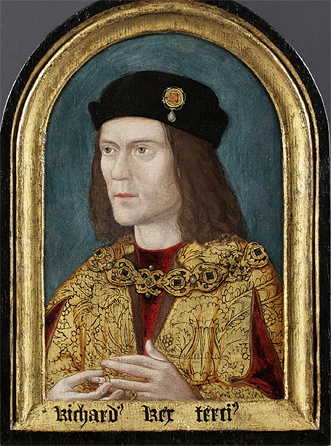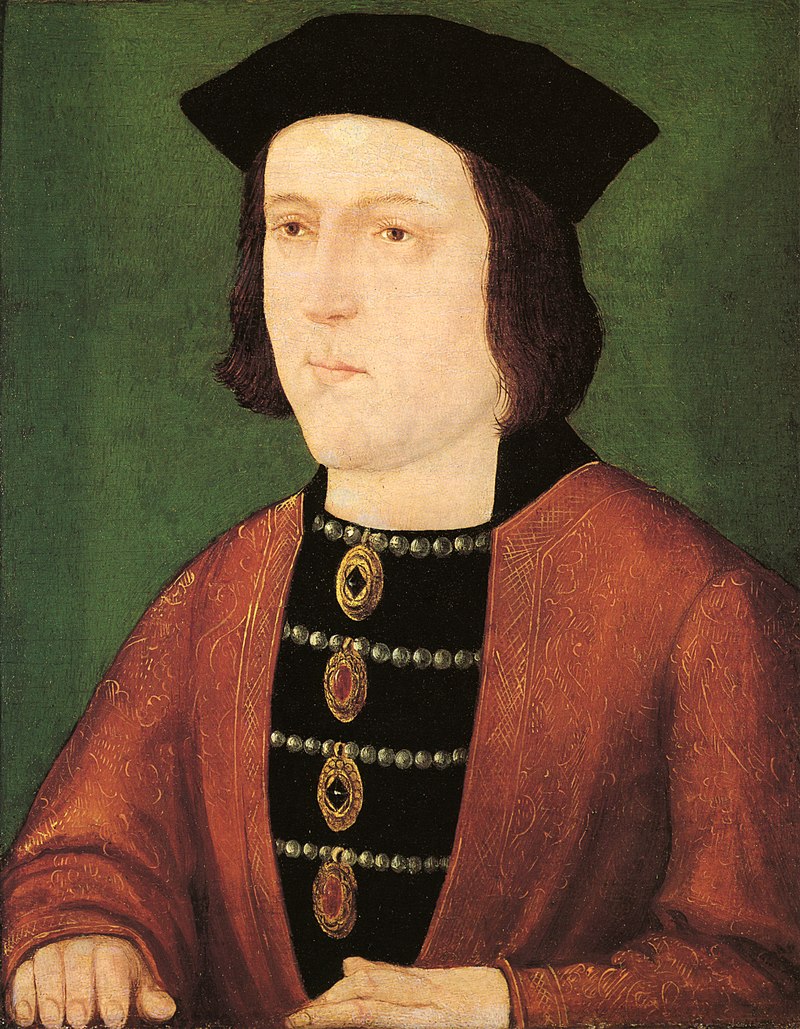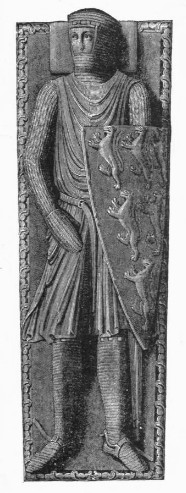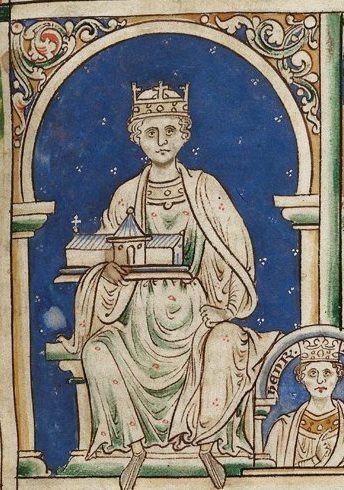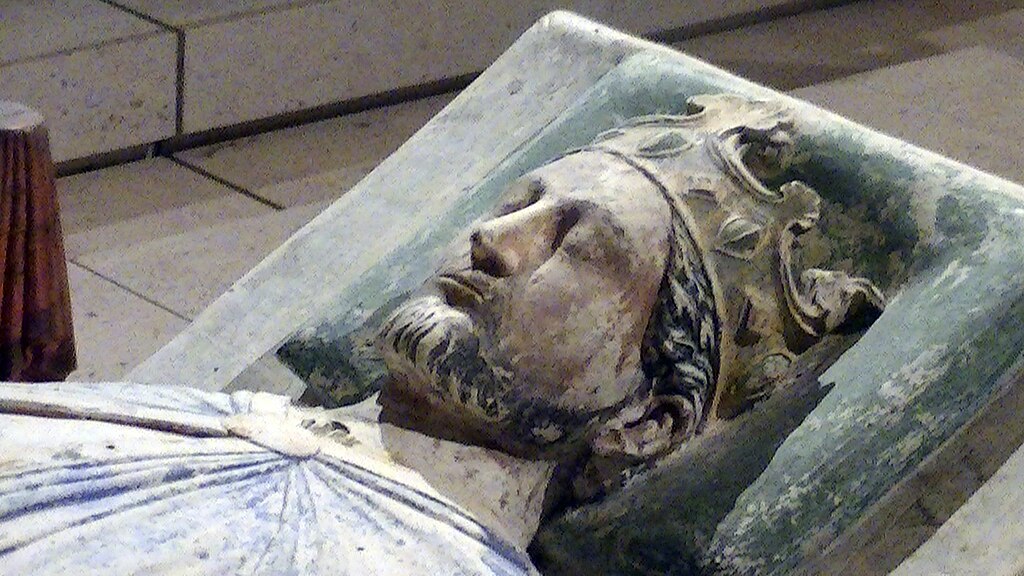by Susan Flantzer
© Unofficial Royalty 2024
NOTE: This is the first in a series of new articles about Royal Ceremonies and Events in the ten European monarchies. This article is being published to coincide with the Royal Maundy Service of March 28, 2024, at Worcester Cathedral where Queen Camilla represented King Charles III who canceled engagements due to his cancer diagnosis. Additional Royal Ceremonies and Events articles will be published starting in May. Unofficial Royalty has some previously published articles at Unofficial Royalty: Royal Ceremonies, Events.
********************

Jesus Washing Peter’s Feet by Ford Madox Brown; Credit – Wikipedia
The Royal Maundy Service is held on Maundy Thursday, also called Holy Thursday, the Thursday before Easter and the day before Good Friday. It is the day during Holy Week that commemorates the Last Supper of Jesus Christ with the Apostles and Jesus washing of the feet of the Apostles, known as Maundy from Old French mandé and from Latin mandatum meaning “command”. The root of the practice of washing the feet is found in the hospitality customs of ancient civilizations, especially where sandals were the usual footwear. A host would provide water for guests to wash their feet, provide a servant to wash the feet of the guests, or even serve the guests by washing their feet. The traditional Maundy of washing feet is still observed in many Christian denominations. Today, the Royal Maundy Service involving the British monarch no longer involves foot washing. Instead, the monarch gives small silver coins known as Maundy Money as symbolic alms to elderly people. The only traces of the washing of the feet at the modern Royal Maundy Service are the nosegays, small flower bouquets, traditionally with the stems bound by doilies, and the linen towels worn by several officials.
********************
History of the Royal Maundy Service

The Royal Maundy Service in 1867 at the Chapel Royal, Whitehall during the reign of Queen Victoria. Samuel Wilberforce, Bishop of Oxford, represented Queen Victoria; Credit – Wikipedia
On April 15, 1210, King John (reigned 1199 – 1216) became the first recorded English monarch to distribute alms to the poor at a Maundy service when he gave clothes, forks, food, and other gifts to the poor of Knaresborough, Yorkshire, England. In 1213, King John also became the first recorded English monarch to give gifts of small silver coins to the poor when he gave gifts of thirteen pence to thirteen poor men at a ceremony in Rochester Cathedral. The number thirteen represented those at the Last Supper, Jesus and the Twelve Apostles. By 1363, during the reign of King Edward III (reigned 1327 – 1377), the monarch gave gifts of pence but also washed the feet of the recipients. King Henry IV (reigned 1399 – 1413) was the first monarch to decree that the number of pence given be determined by the monarch’s age.

Queen Elizabeth II and The Duke of Edinburgh with the traditional nosegays in 2005; Credit – Wikipedia
When washing the feet, the monarch used scented water to hide any unpleasant odors from the poor. In addition, the feet were washed three times before the monarch washed the feet, once by a servant and twice by court officials. In later years, sweet-smelling nosegays were used to hide odors and the nosegays are still carried today during the Royal Maundy Service. During the years when the plague was running rampant, the monarch did not attend the Royal Maundy Service. Instead, the Lord High Almoner attended, washed the feet, and distributed the alms.
The Catholic Queen Mary I (reigned 1553 – 1558) and her Protestant half-sister Queen Elizabeth I (reigned 1558 – 1603) both participated in elaborate Royal Maundy Services. In 1556, Mary washed the feet of forty-one poor women, one for each year of her age while “ever on her knees”, and gave each woman forty-one pence, along with gifts of bread, fish, and clothing. She also donated her gown to the poorest woman. In 1572, Elizabeth gave each woman £1 instead of gifting her gown because she disliked seeing the women trying to grab a piece of the royal gown.
King Charles I (reigned 1625 – 1649), who was beheaded resulting in the monarchy being replaced by the Commonwealth of England, rarely attended the Royal Maundy Service. After the Restoration in 1660, when the monarchy was restored, King Charles I’s son King Charles II (reigned 1660 – 1685) attempted to gain popularity by always attending the Royal Maundy Service. He even attended during the plague years of 1661 and 1663. His brother and successor King James II (reigned 1685 – 1688) also attended the services during his reign. King William III (reigned jointly with his wife and first cousin Queen Mary II, the daughter of King James II) attended the Royal Maundy Service in 1685. Pre-1725 records are vague and there is no record of any monarch attending the service from 1698 to 1932. However, over those years, the Lord High Almoner continued to attend and represent the monarch.
In the early 20th century, members of the royal family sometimes attended the Royal Maundy Service. Queen Alexandra, the wife of King Edward VII (reigned 1901 – 1910) attended twice. Most Royal Maundy Services during the first part of the 20th century were attended by Princess Helena, the fifth child, and third daughter of Queen Victoria, or Princess Helena’s daughter Princess Marie Louise. In 1931, Princess Marie Louise attended the Royal Maundy Service and suggested that her first cousin King George V (reigned 1910 – 1936) distribute the gifts the following year. King George did so in 1932, the only time he attended the service during his reign.
In January 1936, King George V died and his son King Edward VIII attended the Royal Maundy Service that year. King Edward VIII abdicated the throne in December 1936 and was succeeded by his brother King George VI (reigned 1936 – 1952). King George VI attended the Royal Maundy Service only twice during his reign in 1940 and 1944. He was represented at the services during the other years of his reign by the Lord High Almoner, Cosmo Gordon Lang, Archbishop of Canterbury.
Queen Elizabeth II (reigned 1952 – 2022) attended all but five Royal Maudy Services during her seventy-year-reign. She missed two services following childbirth and two services because she was on official visits to Commonwealth countries. In 2022, the year of the death of the 95-year-old Queen Elizabeth II, she was represented at the service by her son then The Prince of Wales and her daughter-in-law then The Duchess of Cornwall. Due to COVID, two services during the reign of Queen Elizabeth II (2020 and 2021) were canceled but the gifts of coins were mailed to the recipients.
King Charles III‘s first Royal Maundy Service as king took place at York Minster on April 6, 2023, and he was accompanied by Queen Camilla. After the announcement in February 2024 that King Charles III was temporarily stepping back from royal duties following a cancer diagnosis, he was represented by Queen Camilla at the 2024 service at Worcester Cathedral.
********************
Royal Maundy Service Sites

1877 Royal Maundy Service at the Chapel Royal, Whitehall. A Yeoman of the Guard carrying the Maundy Money on a silver dish; Credit – Wikipedia
For the monarch’s convenience, the Royal Maundy Service was usually held in or near London. After 1714, when the monarch no longer attended, the Royal Maundy Service was held at the renovated Chapel Royal, Whitehall in the former Banqueting Hall, the only part of the Palace of Whitehall to survive a fire in 1698, until the chapel was given to the Royal United Services Institute.
From 1890 – 1954, the service was held at Westminster Abbey, London except for years when there was a coronation. Because Westminster Abbey had to be closed for the coronation preparations, the Royal Maundy Service was held at St. Paul’s Cathedral, London during the coronation years. From 1954 to 1970, the service was held in even-numbered years at Westminster Abbey and in odd-numbered years at cathedrals throughout the United Kingdom. Since 1970, the Royal Maundy Service has been held at different churches, usually a cathedral, throughout the United Kingdom. Queen Elizabeth II had directed that the service be held in London only once every ten years. However, during the last years of the reign of Queen Elizabeth II, the Royal Maundy Service was held or scheduled to be held at St. George’s Chapel at Windsor Castle or Westminster Abbey in London for the convenience of the elderly Queen Elizabeth II.
********************
The Royal Maundy Gifts
Preparing the Maundy Money in 1932
Currently, the gift recipients are pensioners, retired people, one man and one woman for each year the monarch has lived including the year the monarch is currently living. They are chosen from various Christian churches for their service to their churches and communities. The gift recipients attend a Maundy Lecture so they will be familiar with the Royal Maundy Service. Until the joint reign of King William III and Queen Mary II (1689 – 1694), the gift recipients were poor people of the same gender as the monarch. During the the joint reign of King William III and Queen Mary II, each monarch made gifts to poor people of their gender but after Queen Mary II died in 1694, only men received gifts from King William III who reigned alone until he died in 1702. Beginning with the reign of King George I (1714 – 1727), both men and women have received gifts, with each gender in a number coinciding with the monarch’s age and each recipient receiving that number of pence. The gifts of food and clothing were eventually discontinued and replaced by monetary allowances. In 1837, when 71-year-old King William IV died and was succeeded by his 18-year-old niece Queen Victoria caused a large drop in the number of gift recipients.
Today, each gift recipient receives two small leather purses, one red and one white. During the reign of Queen Elizabeth II, the red purse contained a total of £5.50, symbolizing the monarch’s gift of food and clothing once presented: £1 representing the money for the redemption of the monarch’s gown, £3 in place of the clothing, and £1.50 in place of the food. However, in 2023, the first Royal Maundy service during the reign of King Charles II, the red purse contained two commemorative coins, one to mark the King’s upcoming 75th birthday, the other to mark the 75th anniversary of the arrival of West Indian workers on the Empire Windrush and their contribution to multi-racial Britain.
The white purse contains the Maundy coins equivalent in pence to the monarch’s age. The coins are legal tender but recipients usually consider them as a keepsake. At the 2023 Royal Maundy Service, the new Maundy coins using the official coinage portrait of King Charles III by Martin Jennings made their debut.
********************
The Royal Maundy Service
King Charles III and Queen Camilla with the traditional nosegays, enter York Minster for their first Royal Maundy Service as King and Queen (2023)
After being greeted at the door of the church by the clergy, the monarch is presented with the traditional nosegay and then proceeds up the nave of the church.
The Yeomen of the Guard carrying the Maundy Money
The purses containing the Maundy Money are carried into the church by the Yeomen of the Guard on six silver dishes, held above their heads. Although the exact origin of this custom is uncertain, historians have speculated that it is related to earlier times when food was distributed to the gift recipients and that the dishes were held high to prevent premature grabbing of the food. The six silver dishes date from the reign of King Charles II (reigned 1660 – 1685) and are part of the Royal Regalia which is kept at the Jewel House of the Tower of London when not in use.
King Charles III and Queen Camilla at the 2023 Royal Maundy Service at York Minster in York, England
The Order of Service for Royal Maundy is short and simple. It begins with the reading of the Gospel of John 13:34, “A new command I give you: Love one another. As I have loved you, so you must love one another.” The second reading from the Gospel of Matthew 25: 35-36, says: “For I was hungry and you gave me something to eat, I was thirsty and you gave me something to drink, I was a stranger and you invited me in, I needed clothes and you clothed me.”
King Charles III distributing the Maundy Money in 2023
The monarch distributes half the gifts after the first reading, and the other half after the second reading. During the gift distribution, the Chapel Royal Choir and the local choir sing anthems, concluding with George Frideric Handel‘s magnificent coronation anthem Zadok the Priest. The Royal Maundy Service concludes with prayers, the blessing and the singing of God Save the King.
This article is the intellectual property of Unofficial Royalty and is NOT TO BE COPIED, EDITED, OR POSTED IN ANY FORM ON ANOTHER WEBSITE under any circumstances. It is permissible to use a link that directs to Unofficial Royalty.
********************
Works Cited
- Royal Maundy Service. The Royal Family. https://www.royal.uk/royal-maundy-service
- Royal Maundy Service 2023. The Royal Family. (2023). https://www.royal.uk/news-and-activity/2023-04-06/royal-maundy-service-2023
- The King’s Body Guard of the Yeomen of the Guard – Royal Maundy Service. The King’s Body Guard of the Yeomen of the Guard. https://www.yeomenoftheguard.co.uk/maundy-service
- Wikimedia Foundation. (2024). Maundy (foot washing). Wikipedia. https://en.wikipedia.org/wiki/Maundy_(foot_washing)
- Wikimedia Foundation. (2024). Royal Maundy. Wikipedia. https://en.wikipedia.org/wiki/Royal_Maundy
